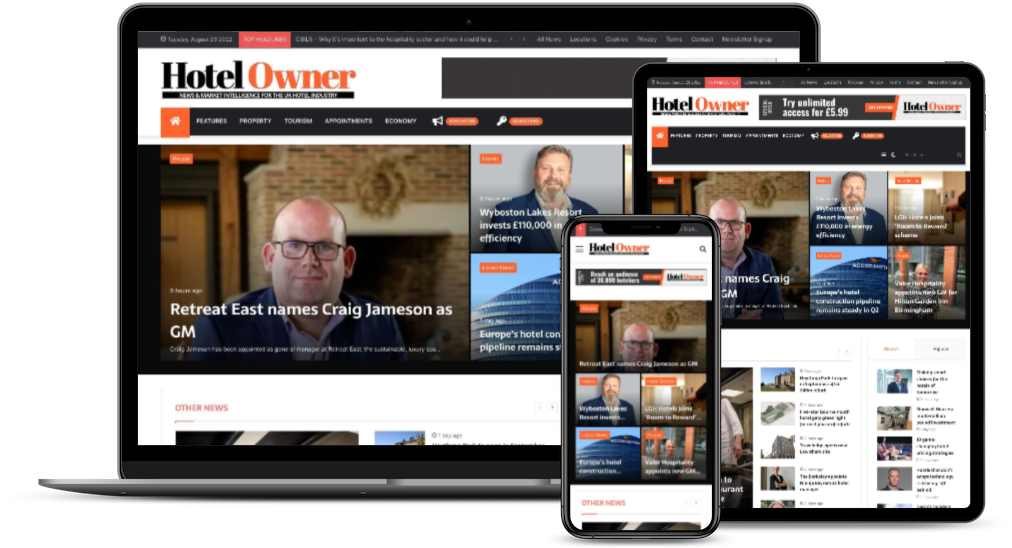
The way that the majority of hotel businesses currently make price level decisions is by looking at historical data, taking what happened last year and comparing that with the upcoming dates year-on-year. How much business there is on the books for a future date, using the comparative past and current status, and where possible also looking at competitive pricing, will dictate the pricing levels.
This fundamental way of pricing is on the assumption that past patterns are a driver for the patterns of the future, which can be a relatively safe assumption in a stable market.
However, we are working in a volatile market and the market drivers are very different now to what they were at this time last year: tightened fiscal economy; rising energy prices; government restrictions; global events etc. These factors have created very different market dynamics, and according to data from Euromonitor, economic uncertainty is expected to continue throughout 2023, with global inflation levels expected to average at 6.8% and global real GDP growth at 2.3%.
This volatility is a consequence of changing patterns in demand across different markets and different customer segments. This makes it difficult to compare future patterns of demand with historic patterns of demand. To better understand how a market will evolve, there are three levels of indicators that a business should monitor and assess the trends within over time to help inform future patterns of demand. Those indicators are grouped into macro level indicators, micro level indicators, and transactional level indicators.
Macro level refers to governmental changes and restrictions, the economy and the impact on consumer and companies’ confidence and desire to spend, customer behaviours impacted by values and buying behaviour changes, and legislation. While mostly confined to longer term planning, it might not be that simplistic. For example, if travel restrictions to China are suddenly lifted, then all of a sudden there is an immediate new burst of demand.
Micro level includes changes in market behaviour, the level of market and customer segment demand, and industry change, including the dynamics of supply and competition. Examples include competition prices or air traffic demand, local openings or events, and aggregating and analysing major business results, and CEO outlook announcements can also give a good flavour for the outlook of demand.
Transactional level refers to the external and internal indicators of the level of demand over the next 12 months. This includes external market trends such as flight capacity changes and media, as well as OTA search and booking patterns, and booking patterns, lead times, owned website visits, shopping patterns, and booking pace.
By combining the macro, micro and transactional level indicators, analysing the trends and developing the insights, businesses can augment their existing understanding to make better predictions about future demand. Armed with this information, businesses can get to unlocking demand by being more relevant in the products and services on offer and the price levels being set.
Pricing needs to reflect two factors. Firstly, the granularity and precision of the price levels optimise what customers are willing to pay for the demand that companies are trying to attract. Secondly, recognition that price elasticity is relative to demand for different products. The price levels need to change independently based on the price elasticity of demand for different things, so the incremental value of one product over another will vary depending on multiple factors such as the moment in time, the destination, the route etc.
Although revenue management systems today are capable of being highly granular with exact price points, the constraint is often with the operational inventory and booking systems, which have more limitations on pricing granularity and on moving different rate codes up and down independently of each other.
As a result, companies should seek to, firstly, use sophisticated and fully automated yield management systems to make pricing decisions and apply those in an autonomous way with their operational selling systems. Secondly, innovate systems to ensure the ability to independently price the different products and services that they sell.
Additionally, the way to respond and unlock market demand is by making sure that the price structure and the different products and services a business is selling are unbundled to the greatest degree so that customers can pick what they want and pay for what they value.
Companies can drive revenue increases through pricing by improving pricing decisions based on actual indicators of future market demand, being more granular about the price levels set for the different products and services on offer, and unbundling products and services to give consumers greater choice and personalisation.
As McKinsey puts it, “The decision to implement price changes in an atmosphere still heavily impacted by a global pandemic is not easy. Pricing strategies grounded in advanced data analytics, informed by value created for customers, and supported by well-planned price execution can help”.









